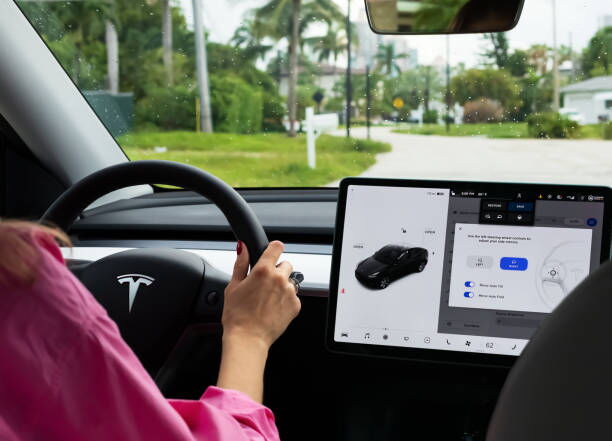In the world of electricity and energy consumption, two terms frequently come up: kW (kilowatt) and kWh (kilowatt-hour). While they may sound similar, they represent fundamentally different concepts. Understanding the difference between these two units is crucial for anyone looking to manage energy consumption effectively, whether for personal use or within a business context. This article delves into the definitions, applications, and importance of kW and kWh, providing a detailed comparison to help you make informed decisions about energy usage.

A kilowatt (kW) is a unit of power that measures the rate at which energy is used or generated. Specifically, it quantifies how much energy an electrical device or system consumes or produces at any given moment. One kilowatt is equivalent to 1,000 watts (W). Power, in this context, refers to the capacity to do work, such as lighting a bulb, running a motor, or charging an EV battery.
For example, if you have a 1 kW electric heater, it means the heater consumes 1,000 watts of power when it is operating. The higher the kW rating of a device, the more power it requires to function. This is why high-powered appliances like air conditioners, electric vehicles, and industrial machinery often have higher kW ratings compared to smaller devices like LED lights or laptops.
While kW measures the rate of energy consumption, a kilowatt-hour (kWh) measures the total amount of energy consumed over time. Specifically, a kWh represents the energy used by a device with a power rating of one kilowatt operating for one hour. It is the standard unit used by utility companies to bill customers for electricity usage.
To put it simply, if you run a 1 kW device for one hour, it will consume 1 kWh of energy. If you run the same device for two hours, it will consume 2 kWh, and so on. The kWh is a cumulative measure, reflecting the total energy consumed over a period, whereas kW is an instantaneous measure of power.
To better understand the difference between kW and kWh, let’s look at some practical examples involving both low and high-power electrical devices.
Consider a 65-inch LED TV that consumes 100 watts (0.1 kW) of power. If you watch TV for 10 hours, the total energy consumed would be:
Energy (kWh)=Power (kW)×Time (hours)
Energy (kWh)=0.1kW×10hours=1kWh
In this case, the TV consumes 1 kWh of energy over 10 hours of operation.
Now, consider a high-powered device like a 60 kW DC fast electric vehicle (EV) charger. If you use this charger for just one minute (which is 1/60 of an hour), the energy consumed would be:
Energy (kWh) = Power (kW) × Time (hours)
Energy = 60 kW × 1 hour = 60 kWh
Here, the EV charger consumes 1 kWh of energy in just one minute, highlighting the significant difference in energy consumption between low and high-powered devices.
While both kW and kWh are related to energy, they serve different purposes:
kW (Kilowatt): Measures the rate of energy consumption or production at a specific moment. It answers the question, "How much power is this device using right now?"
kWh (Kilowatt-hour): Measures the total amount of energy consumed or produced over a period of time. It answers the question, "How much energy has this device used over a certain period?"
To summarize, kW is about the instantaneous power, while kWh is about the cumulative energy usage.
Understanding the difference between kW and kWh is not just an academic exercise; it has practical implications for both individuals and businesses. Here are some key reasons why this knowledge is important:
For business owners, monitoring energy consumption in terms of kWh is essential for accurate cost management. By tracking how much energy is used over time, businesses can better allocate resources and budget for electricity expenses. This is particularly important for industries with high energy demands, such as manufacturing, hospitality, and data centers.
Knowledge of kW and kWh enables businesses to identify areas where energy efficiency improvements can be made. For example, if a company notices that a particular machine has a high kW rating and is used frequently, they might consider upgrading to a more energy-efficient model. Reducing energy consumption not only lowers electricity bills but also increases profitability.
Businesses often operate multiple electrical devices and systems simultaneously. Understanding the kW requirements of each device helps in balancing the electrical load to prevent overloading circuits. Proper load balancing ensures the reliability of the electrical infrastructure and reduces the risk of power outages or equipment failures.
Many businesses are committing to sustainability goals, aiming to reduce their carbon footprint and adopt renewable energy sources. Understanding kWh usage is crucial for tracking progress toward these goals. By monitoring energy consumption, businesses can identify opportunities to switch to renewable energy sources, such as solar or wind power, and reduce their environmental impact.
In some industries, businesses are required to report and comply with regulations related to energy usage and emissions. Accurate monitoring of kW and kWh data is vital for meeting these obligations. For example, restaurants and food service businesses may need to report energy usage to comply with local or national energy efficiency standards.
The difference between a kW and a kWh is fundamental to understanding energy consumption and management. While kW measures the rate of power usage, kWh measures the total energy consumed over time. Both units are essential for making informed decisions about energy usage, whether for personal or business purposes.
By understanding these concepts, individuals and businesses can better manage their energy consumption, reduce costs, improve efficiency, and contribute to sustainability goals. As the world continues to move toward renewable energy and greater energy efficiency, the importance of understanding kW and kWh will only continue to grow.
In summary, knowing the difference between kW and kWh is not just about understanding your electricity bill—it’s about taking control of your energy usage and making smarter, more sustainable choices for the future.